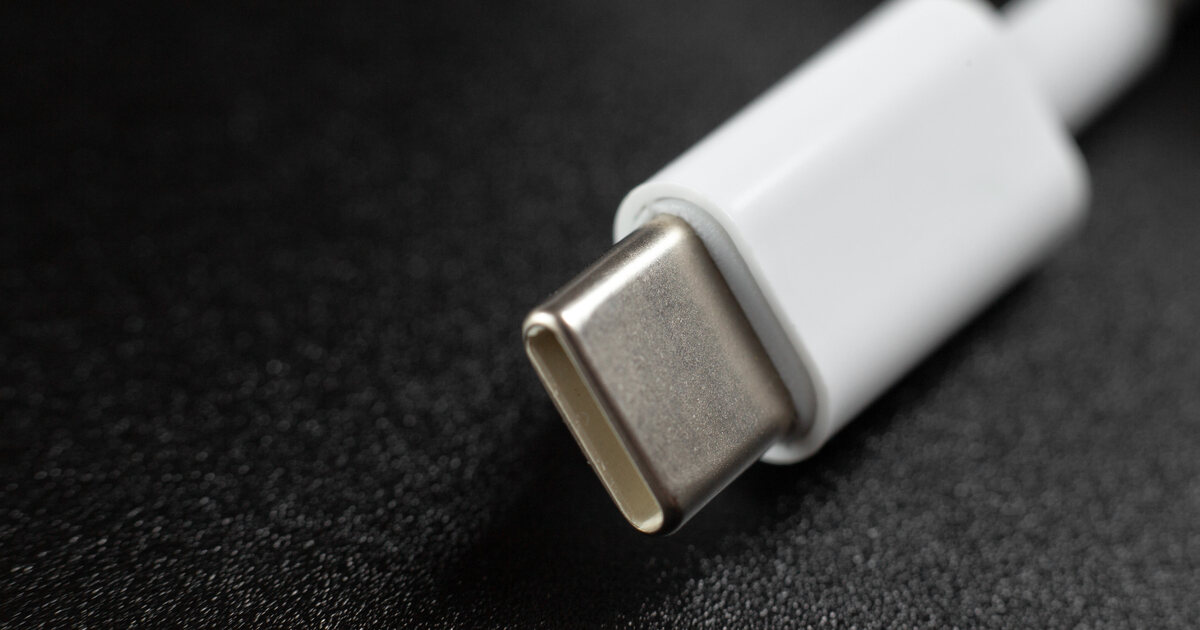The European Commission is looking to make sure all smartphone manufacturers use the same charging technology. Right now, there are two major standards for charging your phone. Apple uses its lightning adapter, and just about everyone else has adopted USB-C. To cut down on e-waste, the European commission wants a charging port law mandating everyone use USB-C. Apple is doubling down on its claim that such a move will “stifle innovation.” Call me crazy, but it seems like much ado about nothing.
What Innovation Is Really Left for Lightning?
Predictably, Apple pushed back against the European Commission’s proposed charging port law. The Commission wants to adopt USB-C as a standard charging connector for all mobile devices. Cupertino’s response is predictable, but still laughable:
We remain concerned that strict regulation mandating just one type of connector stifles innovation rather than encouraging it, which in turn will harm consumers in Europe and around the world.
Okay, Apple, where are you going with Lightning technology? The cables have stayed the same ever since they first came out, and you’ve been moving away from Lightning charging in other devices. As things stand now, only the iPhone, base iPad model, and a handful of accessories still use Lightning.
It’s become clear, Apple, that you’re adopting USB-C in just about every other arena. The latest iPad mini uses USB-C for charging, as does the iPad Pro and iPad Air. The MacBook uses USB-C Power Delivery, and there are plenty of USB-C ports to be found on the iMac and Mac mini. I don’t see a Lightning port on any of your laptops or desktop computers.
Is This Really Just About the Government Telling You What to Do?
More and more, it seems that Apple isn’t really complaining about the charging port law because it will stifle innovation. Rather, it strikes me like something a rebellious teenager would say to its parents: “Stop telling me how to live my life!” Lightning certainly had its strong points in the early days. However, USB-C has seen much more innovation than Lightning probably ever will.
I get that nobody wants the government telling them what to do. However, rather than claiming the move will stifle innovation, just be honest about your resistance. You have not improved on your Lightning technology, you’ve increased your usage of USB-C, and only a handful of your products still rely on the older technology.
I’m never one to agree with the government telling businesses how to operate. However, this is a case that has serious merit. The sheer number of discarded cables in landfills is disgusting. There really is no reason not to switch the iPhone and related accessories over to USB-C. USB-C is a superior technology and it’s more modern. Adopting it as the standard for mobile device charging will dramatically reduce e-waste.
Apple, you claim to be all about the environment. Given that stance, this seems like a move you should be embracing, not resisting.

I disagree. The govt picking winner and loser technologies is wrong. They are not equipped for it. It’s the principle. Just like I may not agree with what you say, but I’ll defend to the death your right to say it. I hate lightening and want it replaced with usbc, but not by the pointed gun of some idiot eu bureaucrat.
But as I see it they aren’t. USB-C HAS won. Not because the EU said so, because the marketplace, including most of Apple’s products have moved to it.
I disagree. The govt picking winner and loser technologies is wrong. They are not equipped for it. It’s the principle. Just like I may not agree with what you say, but I’ll defend to the death your right to say it. I hate lightening and want it replaced with subclass but not by the pointed gun of some idiot eu bureaucrat.
Lighting is also a data port. I use it to connect external DACs to iPhone. Does USB-C allow for such usage?
Of course it would. USB-C is a broad-usage technology: it can already be used for power delivery, connecting displays, storage devices, input devices, and yes, DAC. In fact, Astell & Kern have one already on the market and highly reviewed. The only drawback reviewers seem to agree on with this one is…wait for it…it won’t work on iOS.
Thanks for that. Then I’m on word. USB-C all the way.
Apple can recycle my old cables by exchanging them for free USB-C ones. I think that there still some FireWires in my box of tangle.
As to the EU, they are the World’s largest home owners association board.
I don’t totally disagree with you here, but this is a situation I actually agree with them on. Apple has had many, many years to start helping solve this particular e-waste problem, and has failed to do so. Maybe it’s time someone forced the issue.
I’m not sure the EU bureaucrats are capable of forcing any issue. By the time its written into law, its out of date and irrelevant. Why not INSIST the power brick has a separate connecting cable, a la iPad charger, with a USB-C socket, then all that is required is an appropriate cable to connect the device. Works for my Apple Watch, works for my iPhone, works for my iPad, works with the wireless charging pad for watch and phone. USB-C power delivery is a minefield of complexity, the only way I can figure it out simply is small brick = low power, large brick = lots of power. The microscopic rating information on the back is waaaaay too small to read, so why not colour code the USB-C port into which the cable is plugged – green low power, blue medium power, red – high power capable of charging a laptop.